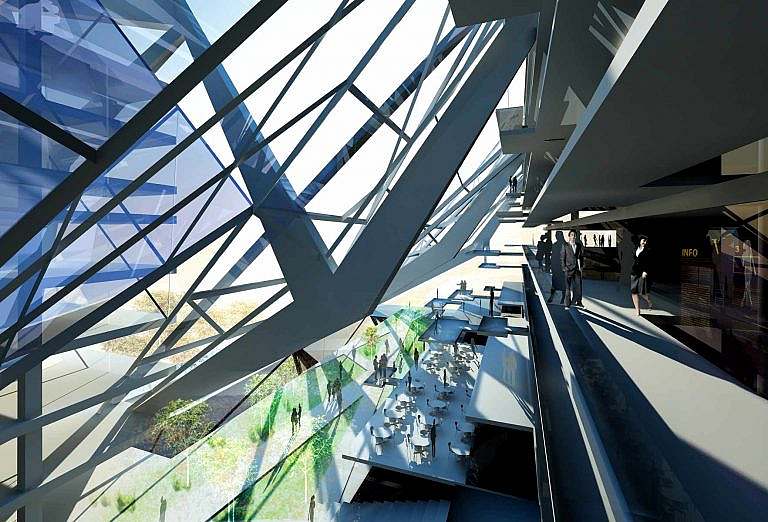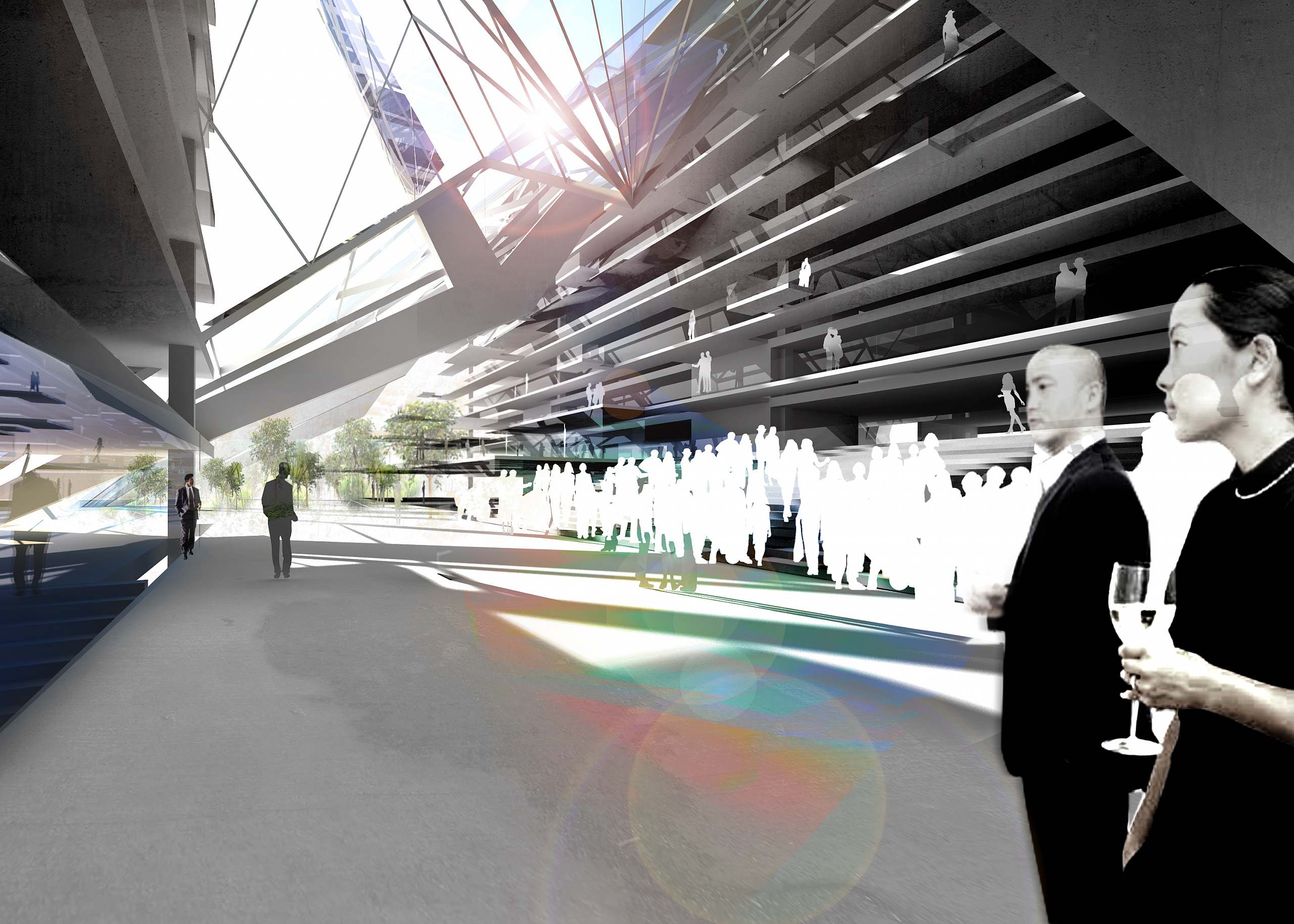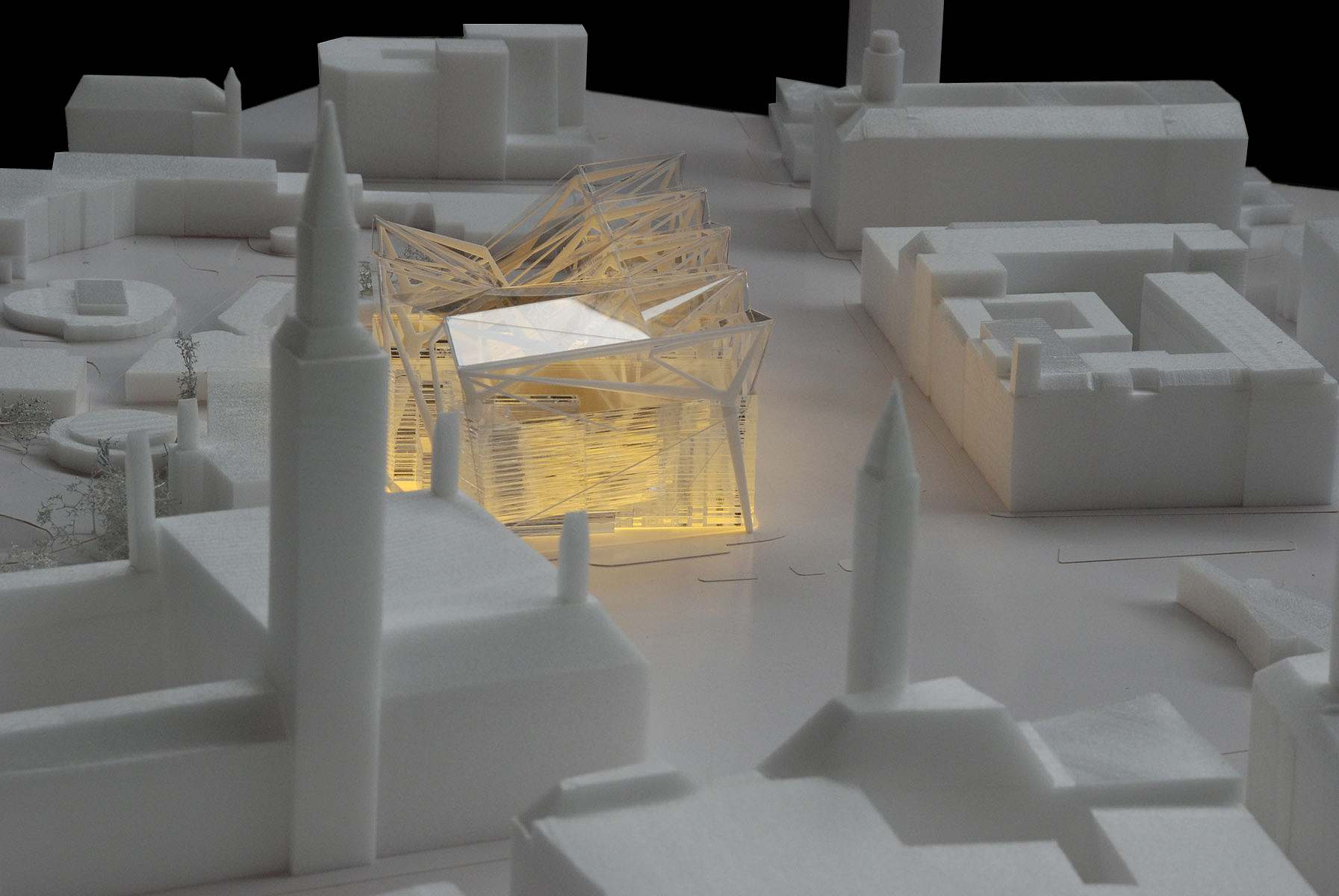Sundsvallsbroen er et resultat af vores vinderforslag i en arkitektkonkurrence og efterfølgende arbejde som arkitektrådgiver på projektet. Broen er blevet en markant men harmonisk tilføjelse til Sundsvall, der forbinder byens centrum med de omkringliggende landskaber på en måde, som respekterer og indrammer omgivelserne. Med en samlet længde på over 2 kilometer og en frihøjde på cirka 33 meter skaber broen et nyt urbant rum, hvor bugten, byens silhuet og de omgivende bakker mødes i et sammenhængende og dynamisk hele. Trods sin imponerende størrelse smelter broen sammen med omgivelserne og bliver et naturligt led i byens struktur.
At the topping-out ceremony for the new Lehrte-Süd school centre, the city mayor and others praised the good cooperation and the fact that the project is on time and on budget.
The 100 million euro project is being realised in a public-private partnership and brings together an integrated comprehensive school and secondary school under one roof. The first stage will be completed in 2026 and will provide schooling for 1,800 students.
How do you find your car in a grey concrete world? In collaboration with By & Havn, KHR has developed a wayfinding concept that makes it easier to find your way in a number of Copenhagen's car parks where it was previously difficult to find your way. The concept creates clarity and recognisability across the facilities - while adapting to the architecture and usage patterns of each car park. With simple tools such as colours, pictograms and mega-graphics, both function and aesthetics are supported in everyday life for thousands of users.
KHR Architecture has developed a wayfinding strategy for a number of By & Havn's car parks in Copenhagen with a focus on recognisability and user-friendliness. The concept makes it easy to find your way - no matter which car park you arrive at. In the Bjerget car park, however, a special version has been developed that respects the building's distinctive architecture and visual identity. The existing colour palette and typography have been retained and refreshed, while the wayfinding has been updated with new pictograms, floor markings and clear landmarks. The result is a system that is both site-specific and recognisable across the city.
At Nuuk School, wayfinding is an integral part of the architecture and user experience. Students, teachers and visitors must be able to easily find their way around the many buildings and functions - not through heavy signage systems, but through a visual and sensory strategy based on Greenland's rich nature, colour codes and playful symbolism. The result is a recognisable and logical environment that supports learning and well-being.
The wayfinding concept at Haukeland Children's Hospital is an example of how good architecture can make complex buildings easy to understand and move around in. Already in the early design phases, the focus has been on supporting intuitive orientation and efficient flows for children, relatives and staff. The combination of thoughtful architecture, target group-specific signage, individual colour concepts for each block and integrated art elements create recognisability and a sense of place in the 79,000 m² hospital.


